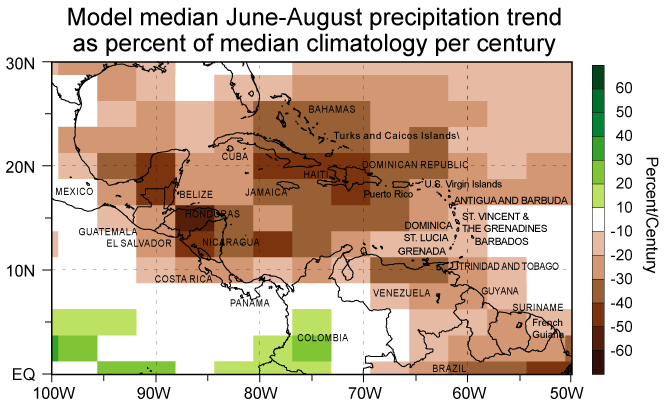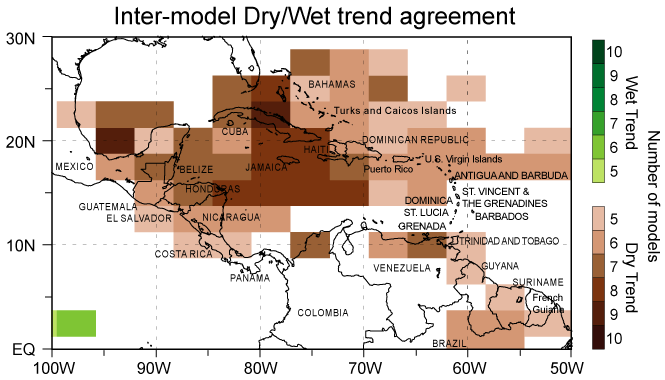|
Research Highlights
|
Tropical drying trends in global warming models and observations
·
Related model results for the Caribbean/Central-American region
The Upped-ante Mechanism and the Anomalous Gross Moist
Stability (Rich-get-richer) Mechanism
|

Carribean precipitation change from an ensemble of ten models
|
|
(see also:
PNAS paper links)
|

click on image for larger view
|
|
Trend in June-August precipitation from 1979 to 2099 for a multi-model ensemble median as percentage change per century relative to the ensemble median precipitation climatology (1901-1960 average). Brown colors indicate precipitation decreases in percent. Please refer also to the figure of inter-model model agreement (below). The median changes should be treated with particular caution for places where the ten models do not have high agreement. Note that the percent change in the median is not identical to the median of the percent changes for individual models. This figure is similar to Fig. 5a of Neelin et al (2006, PNAS) but expressed as a percent change per century for the model median trend. Shading indicates 99%significance by the Spearman-rho test.
|
|
|

click on image for larger view
|
|
Model agreement on the predicted local precipitation trend from 1979 to 2099 for JJA. The number of models (out of 10) that agree on a dry trend or a wet trend at each location exceeding 99% significance and exceeding a minimum amplitude change (20% of the median climatology per century) is given by the brown or green color bars, respectively. Only regions with five or more of the 10 models agreeing are shaded. Modified from Fig. 5b of Neelin et al (2006, PNAS).
|

